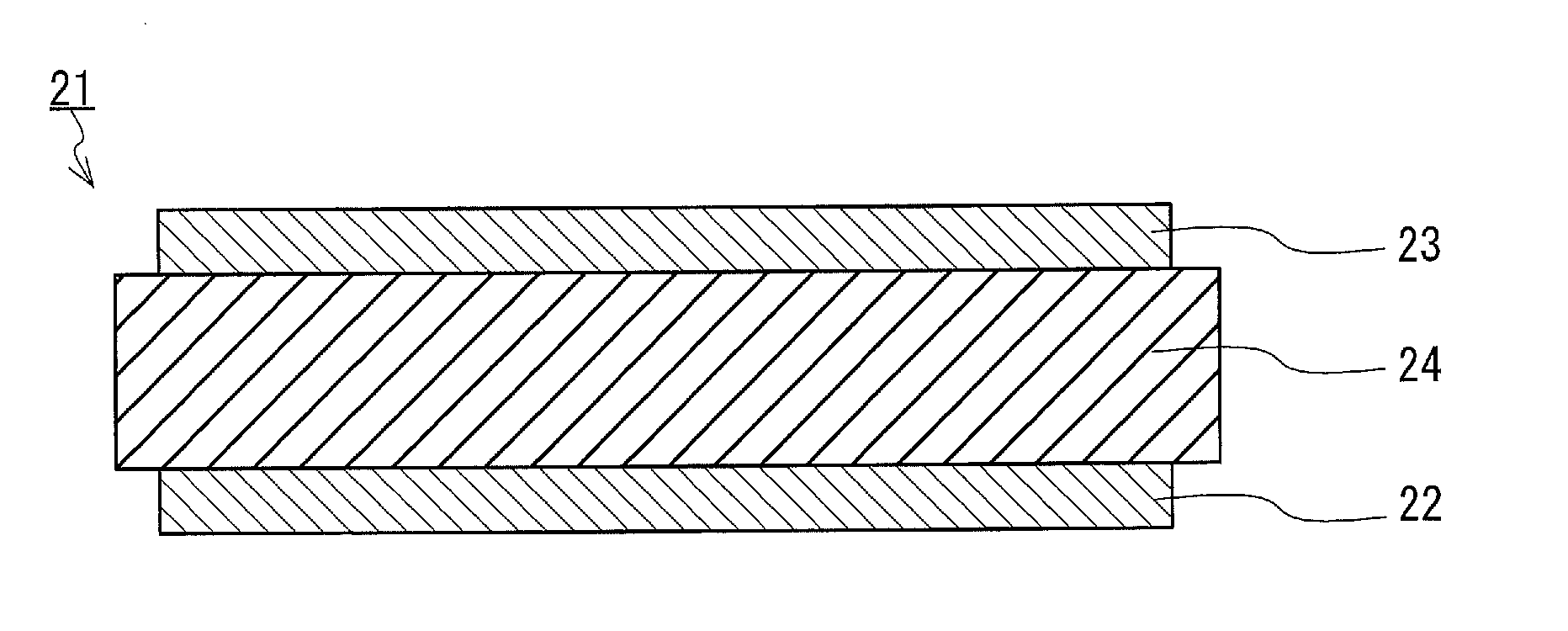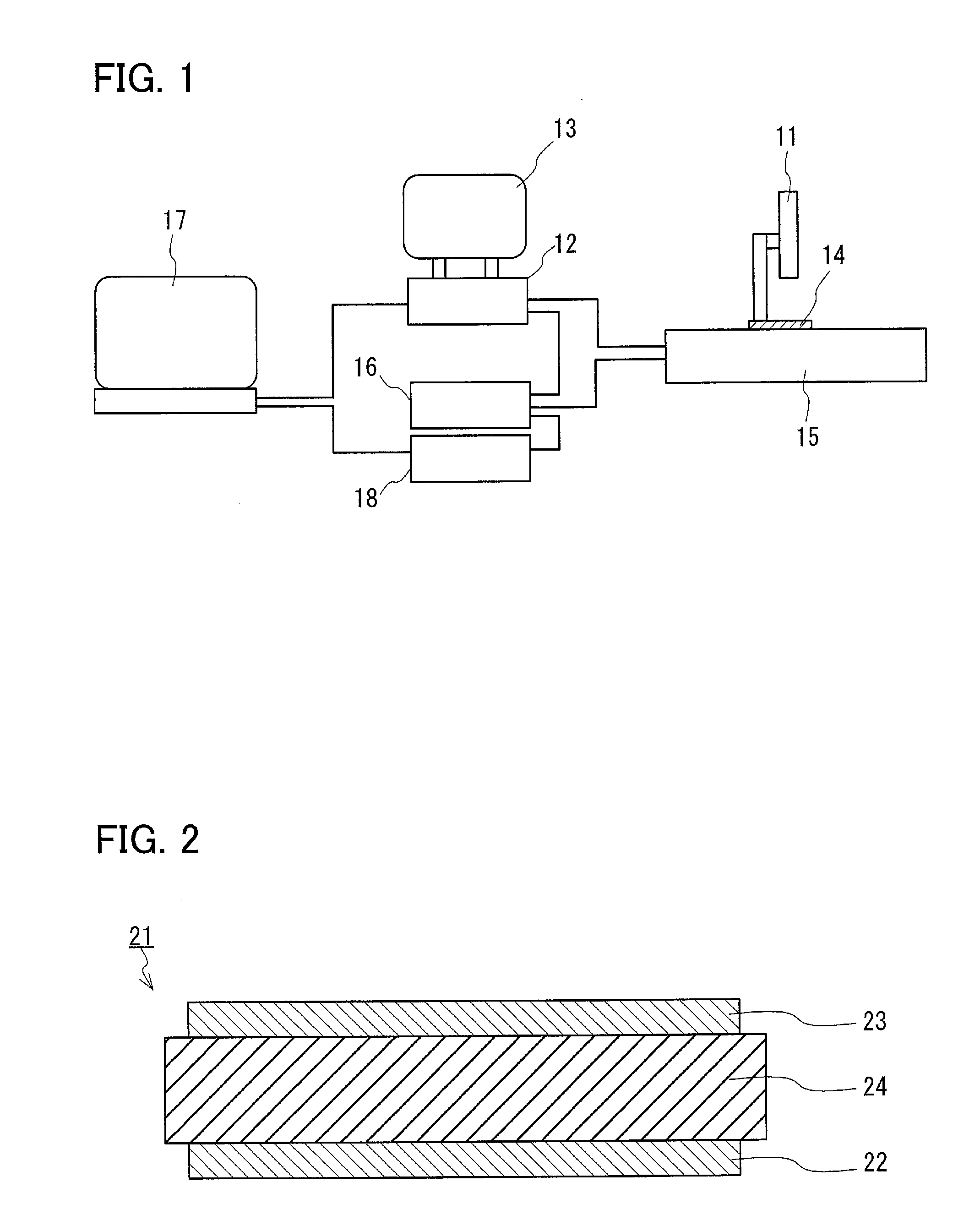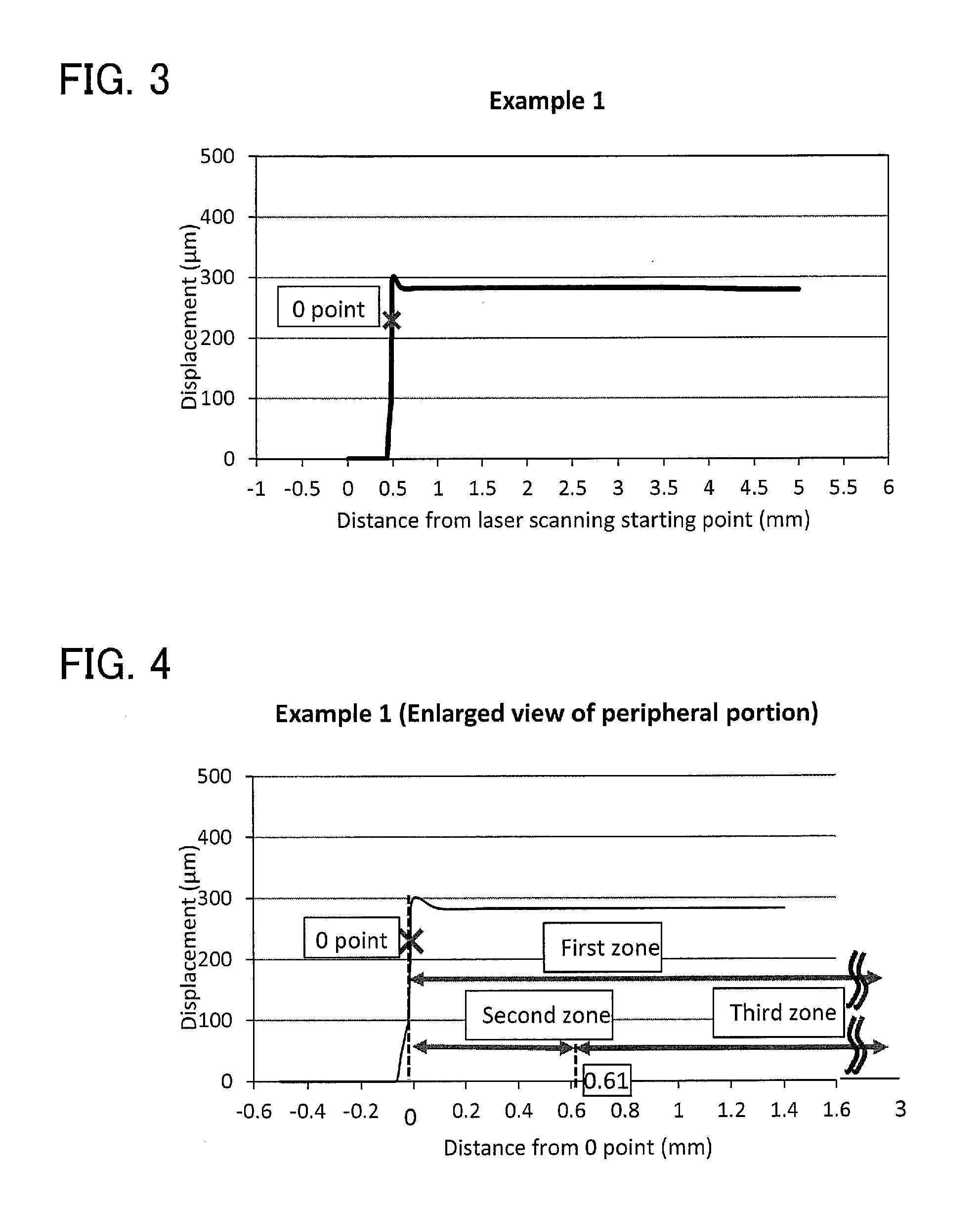Electrolyte sheet for solid oxide fuel cell, method for producing the same, and single cell for solid oxide fuell cell including the same
- Summary
- Abstract
- Description
- Claims
- Application Information
AI Technical Summary
Benefits of technology
Problems solved by technology
Method used
Image
Examples
first embodiment
[0026]Embodiments of the electrolyte sheet for a SOFC of the present invention will be described specifically.
[0027]The electrolyte sheet for a SOFC of the present embodiment has the following characteristics (1) and (2), in at least one of principal surfaces of the sheet:
[0028](1) a burr height [ΔH (0-3)] in a first zone is 100 μm or less, as measured by irradiating the principal surface of the sheet with a laser beam at a pitch of 0.01 mm and three-dimensionally analyzing light reflected from the principal surface using a laser optical three-dimensional shape measurement device, the first zone being a zone extending between a peripheral edge of the sheet and a position 3 mm inside the peripheral edge; and
[0029](2) a ratio [ΔH (0.61-3) / ΔH (0-0.6)] of a burr height [ΔH (0.61-3)] in a third zone to a burr height [ΔH (0-0.6)] in a second zone is 0.5 or more and 2.0 or less, as calculated from the burr heights measured by irradiating the principal surface of the sheet with a laser beam...
second embodiment
[0073]An embodiment of the SOFC single cell of the present invention is described specifically. FIG. 2 is a cross-sectional view showing an example of the structure of a SOFC single cell of the present embodiment.
[0074]A SOFC single cell 21 of the present embodiment includes an anode 22, a cathode 23, and an electrolyte sheet 24 for a SOFC disposed between the anode 22 and the cathode 23. As the electrolyte sheet 24, the electrolyte sheet for a SOFC described in the first embodiment is used. As the anode 22 and the cathode 23, an anode and a cathode used in a known SOFC can be used respectively.
[0075]The SOFC single cell 21 of the present embodiment can be produced by forming the anode 22 on one of the principal surfaces of an electrolyte sheet obtained by the method described in the first embodiment and forming the cathode 23 on the other principal surface thereof. First, a binder and a solvent are added to a material powder constituting the anode 22 or the cathode 23 and a dispers...
example 1
Green Sheet Producing Step
[0078]The following components were put into a nylon mill containing zirconia balls: 100 parts by mass of 10 mol % scandia-1 mol % ceria-stabilized zirconia powder (product name “10Sc1CeSZ”, d50:0.6 μm, manufactured by Daiichi Kigenso Kagaku Kogyo Co., Ltd.) as a ceramic material powder, 16 parts by mass of methacrylic copolymer-based binder (on the solid content basis) (number-average molecular weight: 100,000, glass transition temperature: −8° C.), 2 parts by mass of sorbitan trioleate as a dispersant, 3 parts by mass of dibutyl phthalate as a plasticizer, and 50 parts by mass of toluene / isopropanol mixed solvent (dispersion medium) (mass ratio=3 / 2) as a solvent. The resulting mixture was milled in the nylon mill for 40 hours. Thus, a slurry was prepared. The obtained slurry was transferred to a jacketed, cylindrical, round-bottom, vacuum degassing container having an internal volume of 50 L and equipped with an anchor-type stirrer. The slurry was condens...
PUM
| Property | Measurement | Unit |
|---|---|---|
| Length | aaaaa | aaaaa |
| Fraction | aaaaa | aaaaa |
| Length | aaaaa | aaaaa |
Abstract
Description
Claims
Application Information
 Login to View More
Login to View More - R&D
- Intellectual Property
- Life Sciences
- Materials
- Tech Scout
- Unparalleled Data Quality
- Higher Quality Content
- 60% Fewer Hallucinations
Browse by: Latest US Patents, China's latest patents, Technical Efficacy Thesaurus, Application Domain, Technology Topic, Popular Technical Reports.
© 2025 PatSnap. All rights reserved.Legal|Privacy policy|Modern Slavery Act Transparency Statement|Sitemap|About US| Contact US: help@patsnap.com



